vii
Rustic houses and buildings
A characteristic Seligmann shared with Le Corbusier was a tendency to surprise with a new approach to every project. By the time one could design a project that would look like Seligmann's, it was already too late. He had moved on. Seligmann often received inspiration from his daily drives to and from Ithaca, at a time before the strip malls obliterated the view. Returning from one drive he discovered a handsome farmstead—grain silo and all—and realized it was the perfect prototype for a new house commission he had just received, in which the client wanted to have three discrete bungalows, plus a standalone painting studio. That became the Rosefsky House. On another occasion, he was struck by the strong formal organization of a dairy barn, and it became the Willard Administration Building, albeit with white porcelain enamel panels instead of red vertical siding.
On yet another occasion, he observed the installation of new telephone poles and determined it might be appropriate to use them to frame a building, as a durable, inexpensive alternative to steel or concrete. That experiment was first applied to the Sproull House, but would find its way through, several more houses and even to small commercial buildings, such as the Cortland Historical Society, the dormitory at Camp Huntington, and even his own office addition. The timing was fortuitous at Camp Huntington, because the rustic style he had developed proved to be the perfect solution to complement the Adirondack Style of the Raquette Lake site.
Seligmann had been well aware of a similar tendency by Le Corbusier to design rustic houses, notably, the un-built Maison Errazuriz, in Chili, at the same time as the better-known white villas. But, as always, the way Seligmann reinterpreted those prototypes, and even his own projects, created a style distinctly his own. It is worth noting that the rustic projects were on the drawing boards at the same time as the high-tech porcelain enamel projects, and do not represent a separate chronological phase.
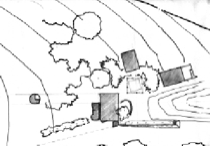
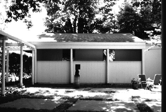
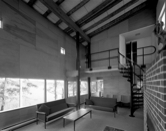
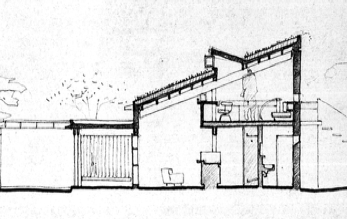
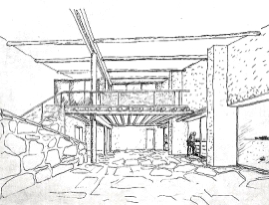
Rosefsky House, scheme 1 1967
Sproull House 1967
Seligmann's studio 1967
Rosefsky House, scheme 1 1967, cross section
Maison Errazuriz 1930 (unbuilt)
Le Corbusier

Camp Huntington 1970, an appropriate use for the rustic style